This post may contain affiliate links. For more information, please see our affiliate policy.
While butter boards might be trending, timeless Cheese Board parties will never go out of style. Learn how to build a cheese board, how much cheese per person, and other cheese tips to serve a spread that’s gourmet and gorgeous all at once.
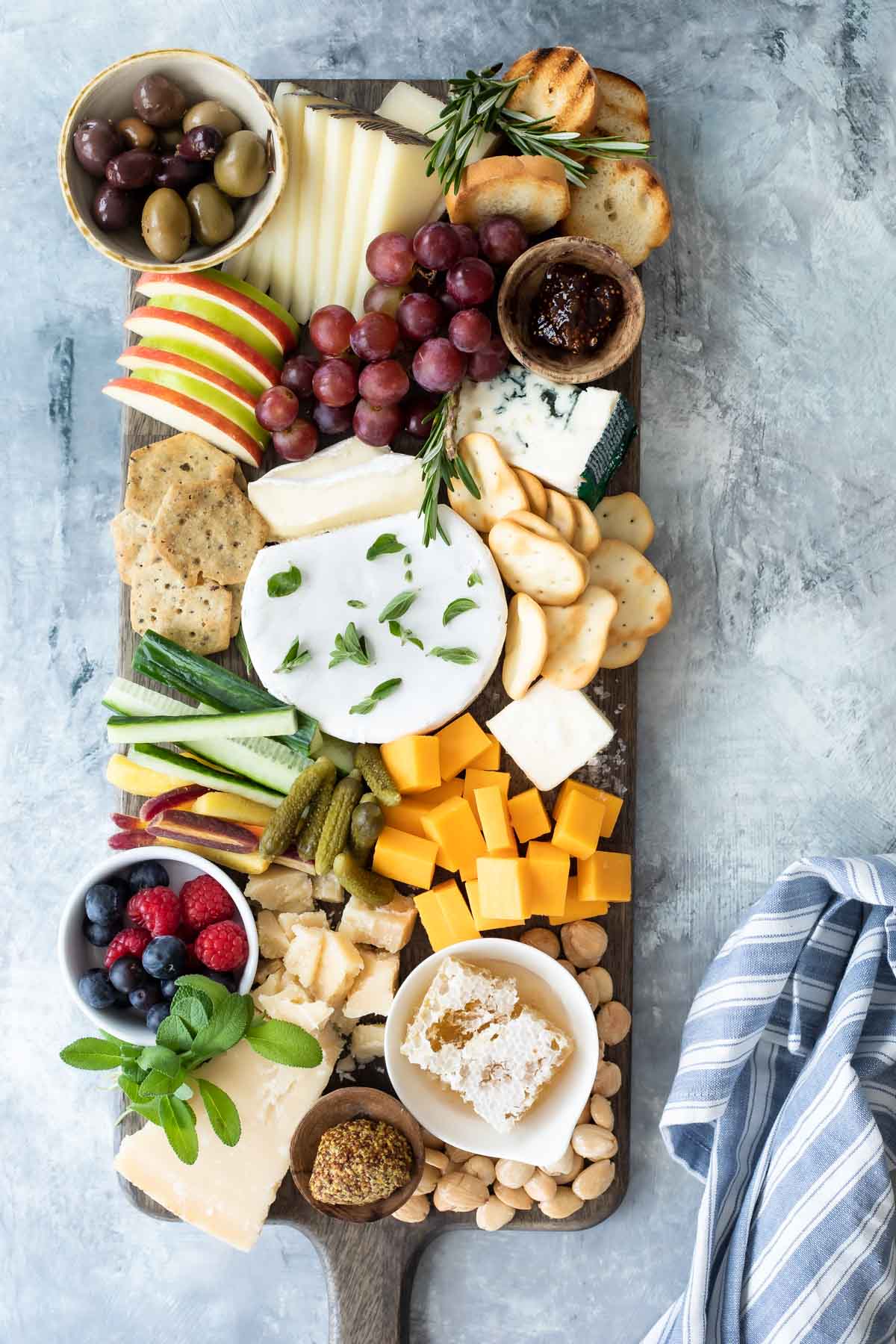
I’ve yet to come across a Cheese Board I didn’t adore. (Butter boards? Those too!) That said, there are certain qualities that really make a platter stand out, in my opinion.
The best Cheese Boards must look abundant, colorful, and packed to the brim with variety. While the cheeses get naming rights, a supporting cast of breads and spreads make a major contribution, too. We want this to feel like more than a supersized Lunchable, right?
Ahead, I’m dishing up all my pro tips for Cheese Board perfection, including the building blocks you’ll need equipment- and ingredient-wise. Plus find out how much cheese per person to invest in for your board, the best temperature to serve cheese, and other secrets to Cheese Board success. (Psst…if you’re looking for an even more kid-friendly option, try my Midwest Charcuterie Platter!)
Table of Contents
Recipe ingredients
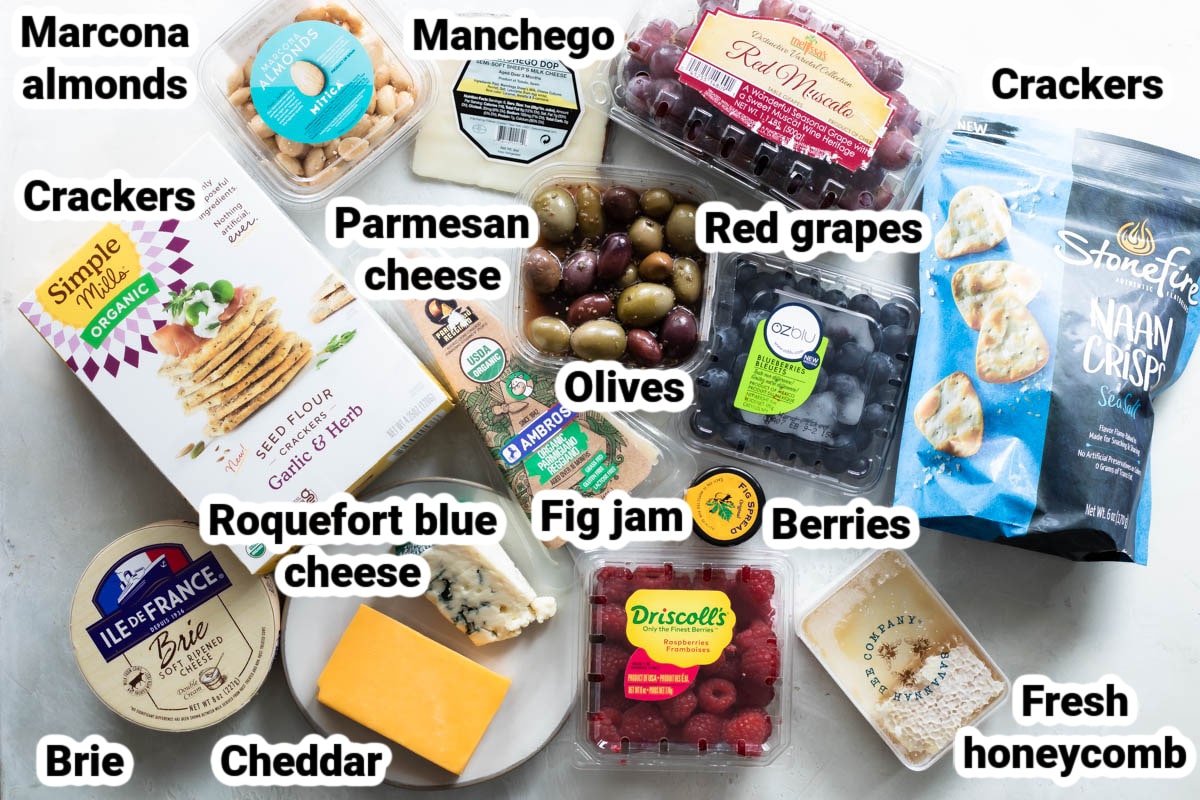
At a Glance: Here is a quick snapshot of what ingredients are in this recipe.
Please see the recipe card below for specific quantities.
Equipment notes
- Boards and platters: Any flat, food-safe, easy-to-clean surface can act as a blank canvas for your Cheese Board. Wood, marble, slate; any flat surface will do. If you’re unsure if the surface is designed to serve food, line it with parchment paper.
- Dishes: Small bowls and cups can corral dips, jams, olives, and other ingredients that might roll or drip on the rest of the snacks. (By the way, if you plan to serve olives, cherries, or other food with pits or stems, tuck an empty dish next to it to collect what can’t be eaten.)
- Serving tools: Cheese knives, appetizer forks, small tongs, toothpicks, and tiny spoons come in handy for occasions just like this. No need to fuss about matching; an eclectic, mix-and-match look is chic.
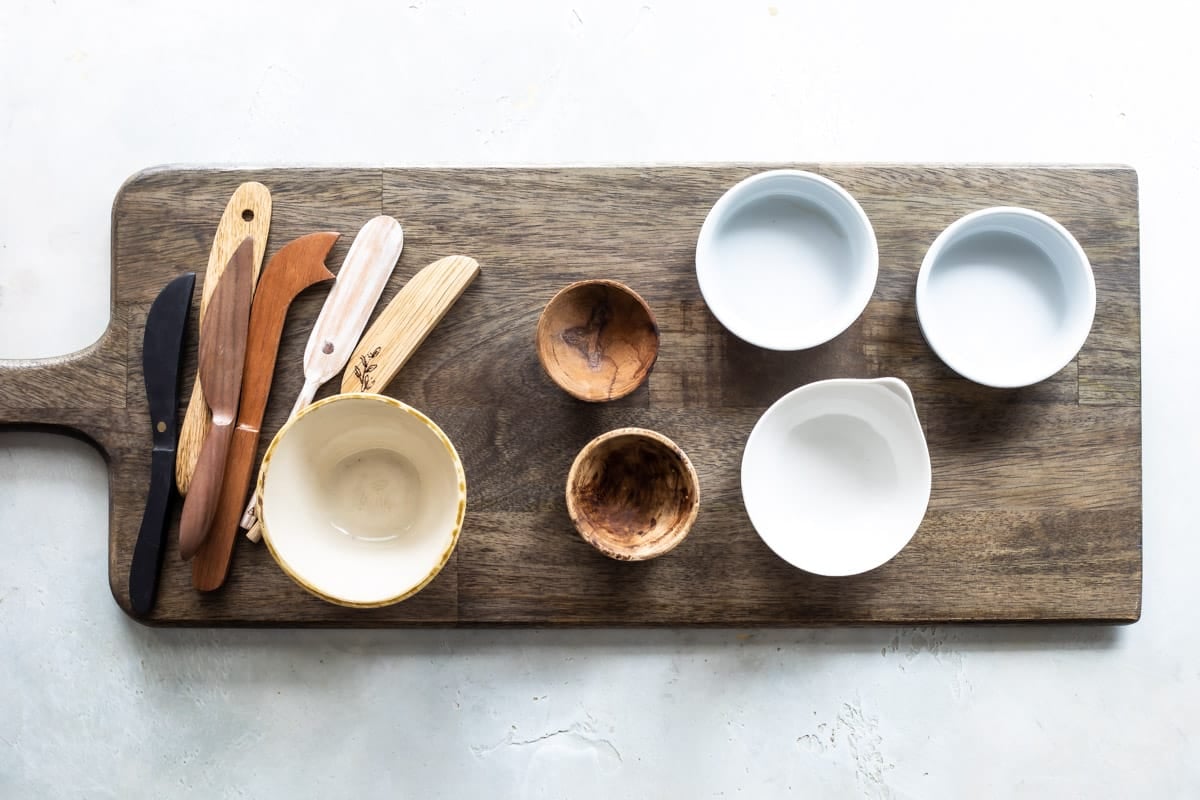
Ingredient notes
- Cheese: Three to five selections should cover your bases. I like to include at least one pick from each of the categories bulleted below. Cheesemongers often suggest highlighting “something old, something new, something stinky, and something blue.” Feel free to use that as a guide, or vary the style of milk that’s used to make the cheese (a sheep’s milk cheese, a cow’s milk cheese, and a goat’s milk cheese make a nice mix). The overall goal with your Cheese Board is to offer enough diversity and variety of flavors and textures that everyone can find something they enjoy; and perhaps discover a new favorite, too.
- Soft Cheeses: Brie, feta, Camembert, chèvre, ricotta
- Semi-hard: Fontina, muenster, Gouda, Havarti, Roquefort, gorgonzola, Manchego, Gruyère, Comté
- Hard Cheeses: Cheddar, Parmigiano-Reggiano, Romano
- Carbs: Crackers, Toasted Baguette slices, Pita Chips, or pretzels are among my favorites. Stock up on plenty extra to replenish the board throughout the gathering.
- Fruit and vegetables: Dried fruit, fresh fruits like strawberries, cherries, pears, apricots, and grapes all work well. If you opt to layer in apple and pear slices, which I personally adore here, toss them with lemon juice before assembly to slow the oxidation process that causes the flesh to brown. Carrot sticks, cucumber slices, and mini bell pepper halves can act as vehicles for dips (or cheeses, for those who aren’t in the mood for carbs or are intolerant to wheat).
- Jams, mustards, and other flavor-boosters: Any form of fruit preserves/jams/jellies, chutney, honey, mustards, walnuts, pecans, pistachios, olives, cornichons, chocolate, and fresh herbs can fill in any gaps on the board and team up to allow guests to build a unique bite each time.
Step-by-step instructions
- Select your board, then create an anchor point on the center with something you’d like to have the spotlight (a wheel of Brie works well).
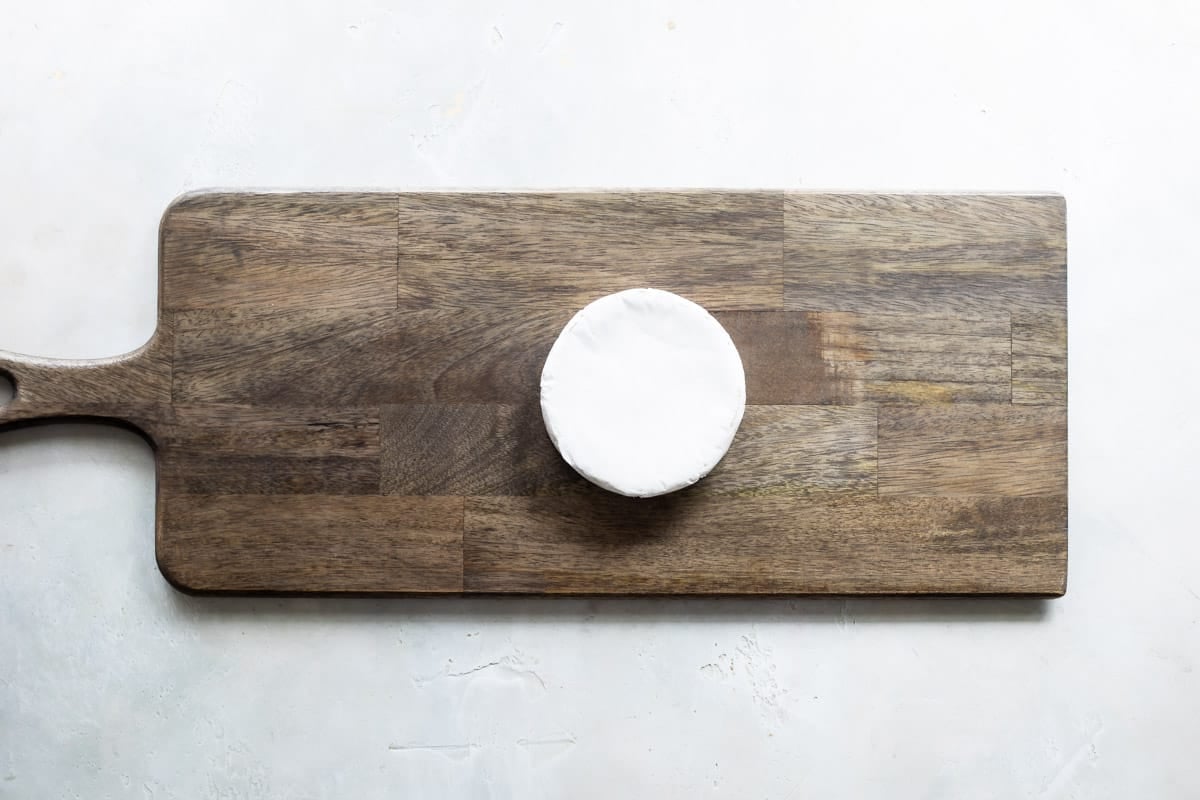
- Using bowls or cups of jams, mustards, cherries, and/or olives, create four more anchor points in the quadrants of your board.
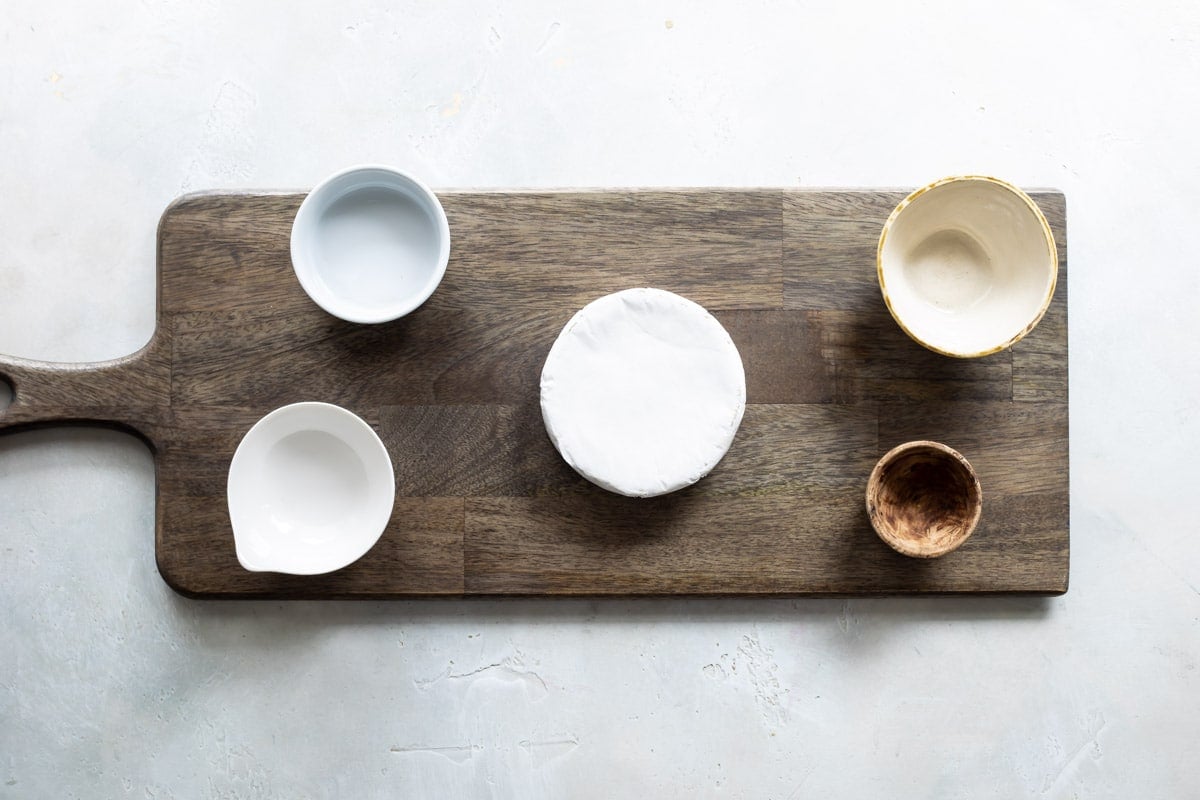
- Using your desired cheeses, fruits, and other ingredients, fill in the gaps from one corner to the center, then around the edges.
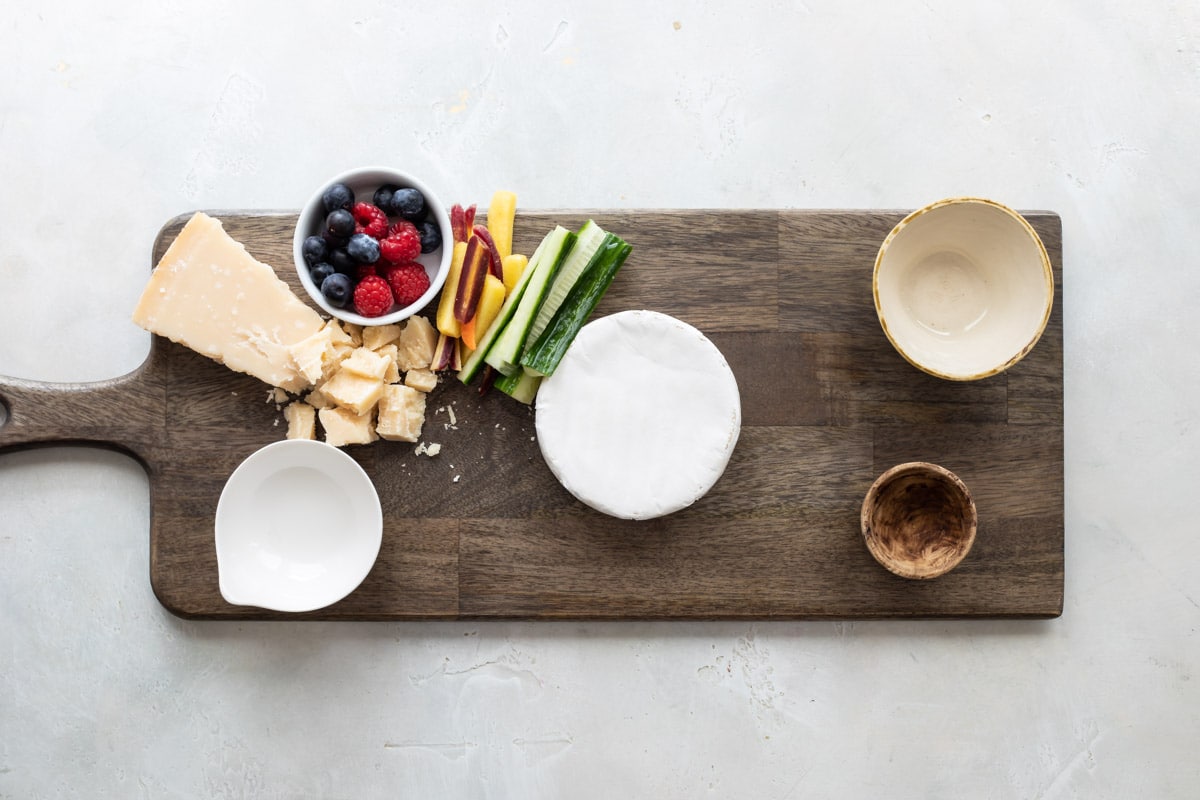
- Repeat in all four quadrants. Layer and overlap when needed; step back to view the board from afar to spot any slim spots.
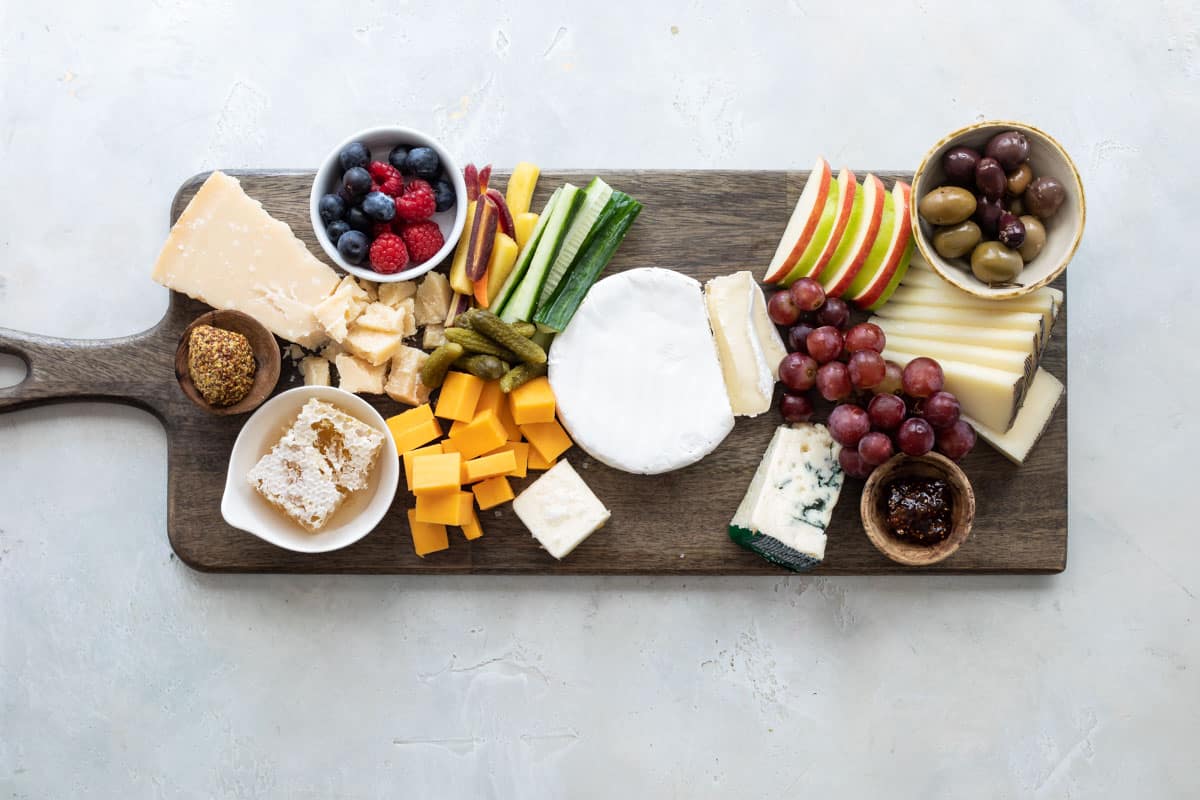
- Fill in the gaps with crackers, toasted baguette slices, and nuts. Garnish with herbs like rosemary and basil, and tuck in forks, spreaders, tongs, and other utensils where needed.
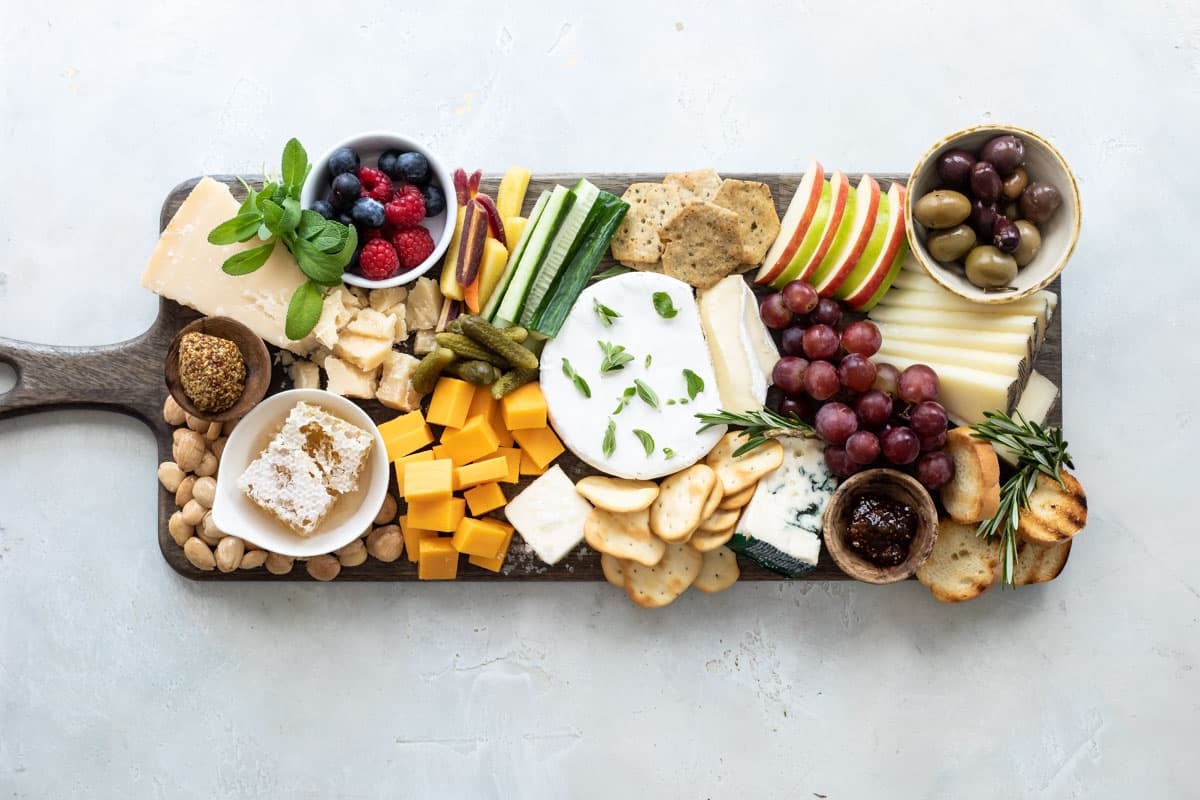
Recipe tips and variations
- Yield: This Cheese Board feeds at least 8 depending on how many fillers you add.
- Storage: Store leftovers covered in the refrigerator for up to 4 days.
- Make ahead: Remove cheeses from the refrigerator for 30 minutes to 1 hour before serving. You want the cheese to be 68 to 72 degrees when you serve them.
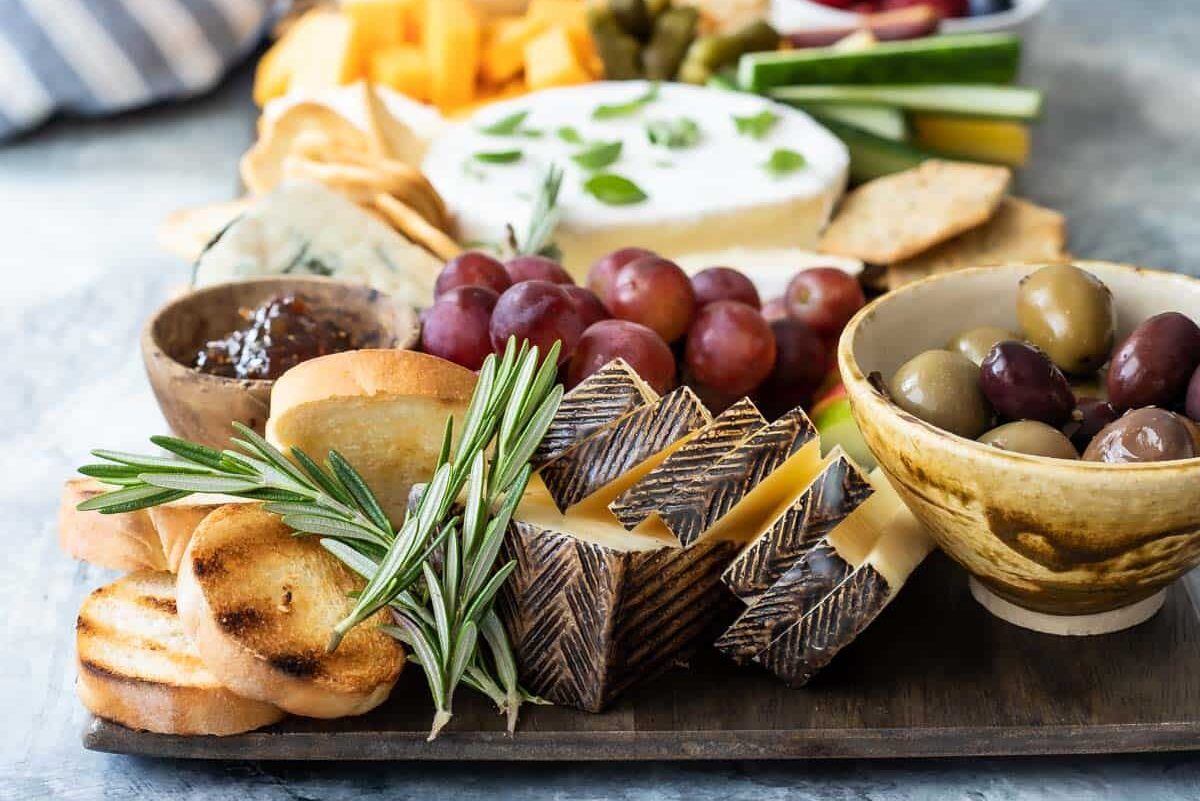
Recipe FAQs
This depends on your budget, the appetites of you and your guests, as well as the other items you’re serving (if any). I usually plan on 2 to 4 ounces of cheese per person. When Cheese Board is acting on its own as a snack dinner, or is the centerpiece of a cocktail party with no other snacks, for example, I err on the more generous side and estimate 4 ounces each so no one leaves hungry.
Consider how people are going to eat the cheese. Logs of goat cheese are often A-OK to platter up whole, while semi-firm cheeses are best served sliced into pieces according to the shape they’re sold in. Firm cheeses can be broken into unfussy large crumbles. If you think your guests could use some coaching about how it’s done (say, slicing brie into wedges with the rind on, or using a fork to create shards of Parmesan), pre-portioning can be a wise and efficient idea so everyone can serve swiftly.
Ideally, closer to room temperature than fully chilled in the fridge; the flavors and aromas are much richer this way. I suggest removing cheeses from the refrigerator 30 to 60 minutes prior to serving. Keep them in their packages, round up the rest of your Cheese Board fixings, and unwrap as needed to incorporate into the board arrange the board as you arrange it.
A bountiful board feels luxurious, so be sure to fill in any gaps with fresh herbs, nuts, fruit, or chocolate. But don’t just think about covering the surface; think vertical, too. Employ an upside-down bowl, coasters, or other tools to add dimension and showcase certain items.
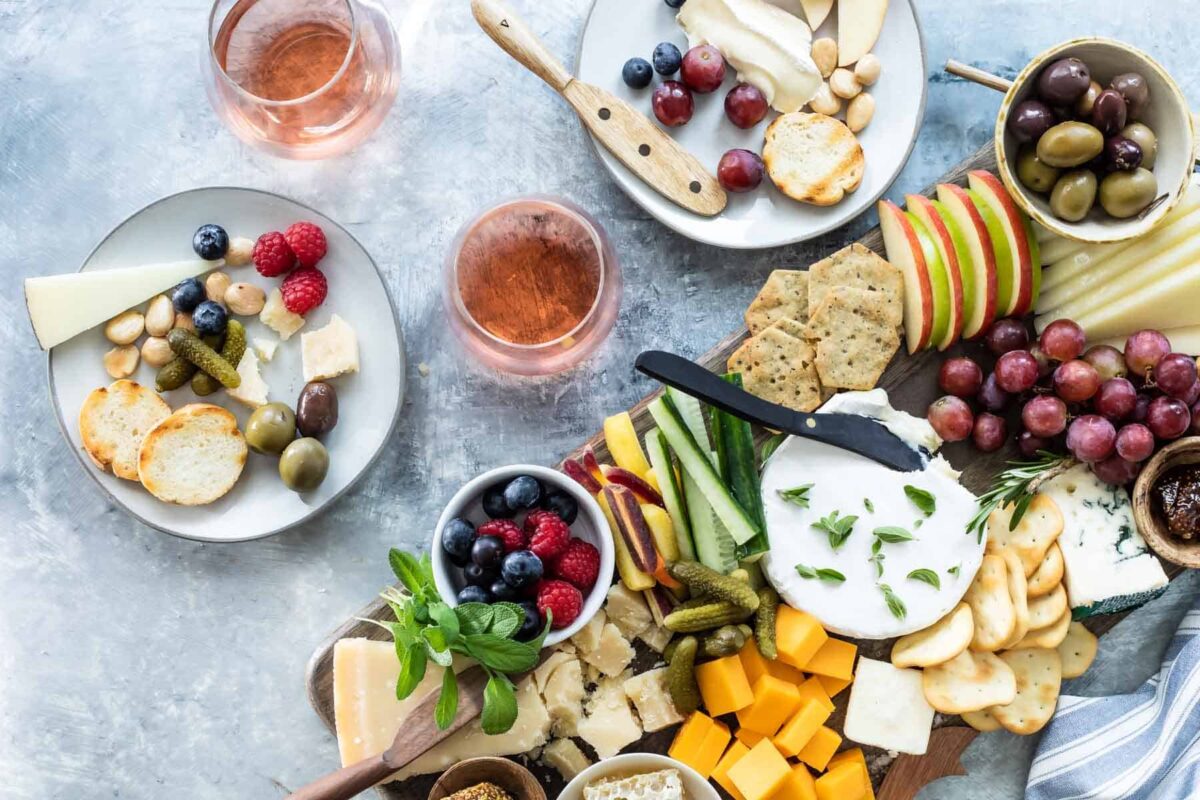
Festive charcuterie boards
Entertaining
Midwest Charcuterie Board
Easter Recipes
Easter Charcuterie Board
Entertaining
Charcuterie Board
Christmas Recipes
Christmas Charcuterie Board
Join Us
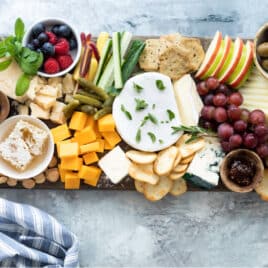
Cheese Board
Ingredients
The cheese (see note 1):
- 1 (8 ounce) wheel brie
- 1 (8 ounce) wedge Manchego
- 1 (4 ounce) wedge Roquefort blue cheese
- 1 (8 ounce) wedge Parmesan cheese preferably aged Parmigiano-Reggiano
- 4 ounces Cheddar cheese
The spreads (see note 2):
- butter softened
- fresh honeycomb
- fig jam
- wholegrain mustard
The fillers (see note 3):
- red grapes
- apple slices a mix of red and green (Gala apples brown the slowest)
- cherries or berries
- cucumbers sliced
- carrot slices heirloom if possible
- olives and cornichons
- Marcona almonds or other nuts
- toasted baguette slices
- flatbread crackers or pretzels
The garnishes:
Instructions
- Select your board, then create an anchor point on the center with something you’d like to have the spotlight (a wheel of Brie works well).
- Using bowls or cups of jams, mustards, cherries, and/or olives, create four more anchor points in the quadrants of your board.
- Using your desired cheeses, fruits, and other ingredients, fill in the gaps from one corner to the center, then around the edges.
- Repeat in all four quadrants. Layer and overlap when needed; step back to view the board from afar to spot any slim spots.
- Fill in the gaps with crackers, toasted baguette slices, and nuts. Garnish with herbs, and tuck in forks, spreaders, tongs, and other utensils where needed.
Recipe Video
Notes
- Cheese: Three to five selections should cover your bases. I like to include at least one pick from each of the categories bulleted below. Cheesemongers often suggest highlighting “something old, something new, something stinky, and something blue.” Feel free to use that as a guide, or vary the style of milk that’s used to make the cheese (a sheep’s milk cheese, a cow’s milk cheese, and a goat’s milk cheese make a nice mix). The overall goal with your Cheese Board is to offer enough diversity that everyone can find something they enjoy; and perhaps discover a new favorite, too.
- Soft: Brie, feta, Camembert, chèvre, ricotta
- Semi-hard: Fontina, muenster, Gouda, Havarti, Roquefort, gorgonzola, Manchego, Gruyère, Comté
- Firm: Cheddar, Parmigiano-Reggiano, Romano
- Jams, mustards, and other flavor-boosters: Any form of fruit preserves/jams/jellies, honey, mustards, nuts, olives, cornichons, chocolate, and fresh herbs can fill in any gaps on the board and team up to allow guests to build a unique bite each time.
- Fruit and vegetables: Dried fruit, fresh berries, cherries, and grapes all work well. If you opt to layer in apple and pear slices, which I personally adore here, toss them with lemon juice before assembly to slow the oxidation process that causes the flesh to brown. Carrot sticks, cucumber slices, and mini bell pepper halves can act as vehicles for dips (or cheeses, for those who aren’t in the mood for carbs or are intolerant to wheat).
- Carbs: Crackers, Toasted Baguette slices, Pita Chips, or pretzels are among my favorites. Stock up on plenty extra to replenish the board throughout the gathering.
Nutrition
Meggan Hill is a classically-trained chef and professional writer. Her meticulously-tested recipes and detailed tutorials bring confidence and success to home cooks everywhere. Meggan has been featured on NPR, HuffPost, FoxNews, LA Times, and more.
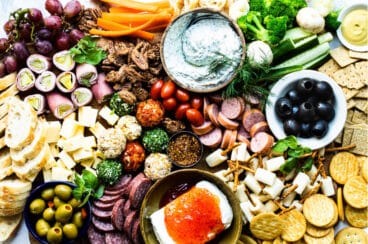
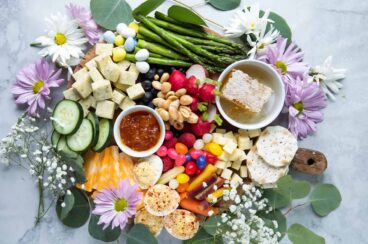
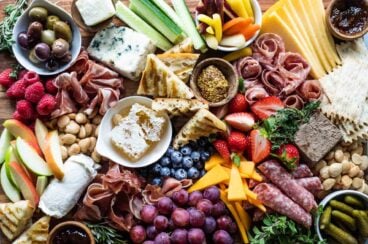
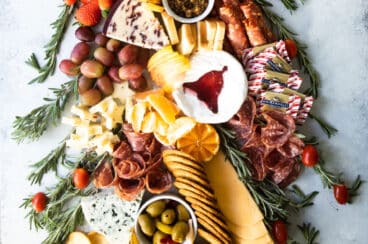
Interesting Well Organized Cooking Skills~ Impressed!
Thank you, Tracy! – Meggan